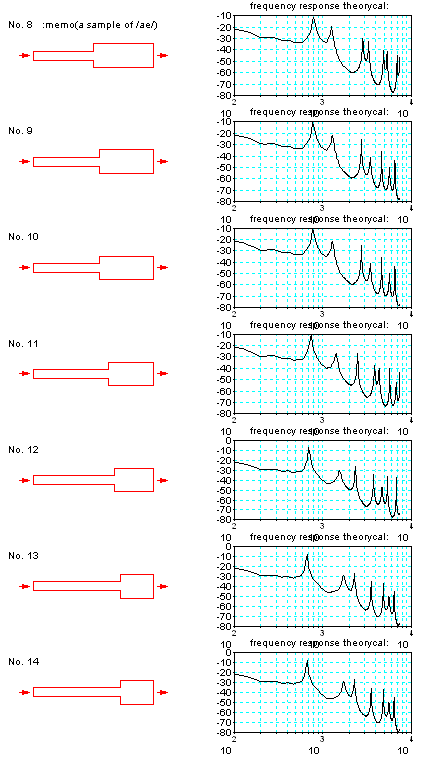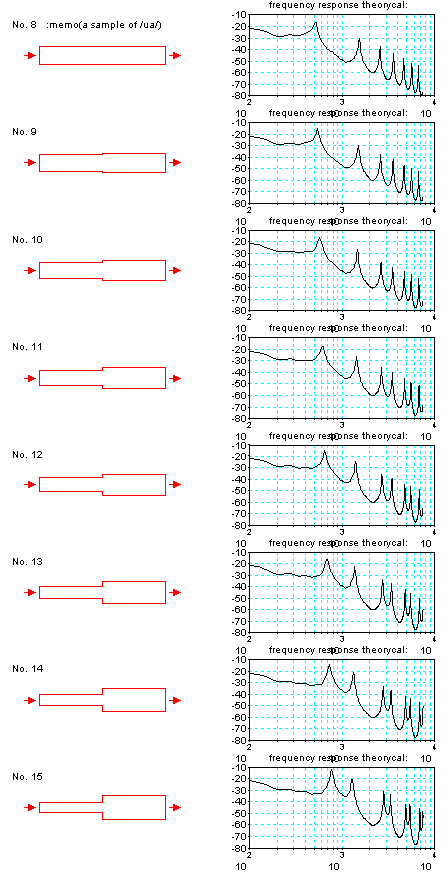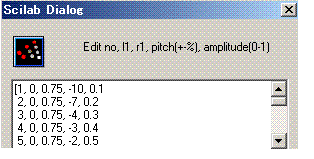
| 右図は、この模型を使った「あ」から「え」の変化の例である。
管のつなぎ目の位置(赤い枠で示される管の断面積が変化している場所)を、真ん中から右の方向に移動することで、音を「あ」から「え」に変化させている。
周波数特性を見ると、周波数の低い側にあった揃った2つの波の一方がより高い周波数側に移動して、低い側は1つになり、より高い周波数側が2つの波になっ
ているように移行していく。 |
 |
| もう一つ、右図に、「う」から「え」の例を示す。
「う」の音は汎用的でいろいろな形状がとりえるのであるが、ここでは、一本の管(チューブ)からはじめて、その真ん中を中心に外側(右の)の管をじょじょ
に開いて行くことで、「う」から「あ」の音の方向に変化させている。周波数特性を見ると、(等しい間隔の)ばらばらの波が、近接していく2つの揃った波に
変化していくのがわかる。 |
 |
 |
左から順番に、番号(この例では一番上の行が1番目を示している。次の行が2番目)、
l1、r1、そして、デフォルトである値に設定してあるピッチ間隔時間からの変
化をパーセントで設定(あまり大きな変化量は設定できない。符号はマイナスだと周波数が低くなる。)、振幅の大きさ(最大で1まで設定可能。波形の大きさ
は正数で0から1の間で設定する)。 各番号が1ピッチ区間に相当していて、個々の要素を手動で設定した後、最後に、OK ボタンを押す。 |
|
|
|